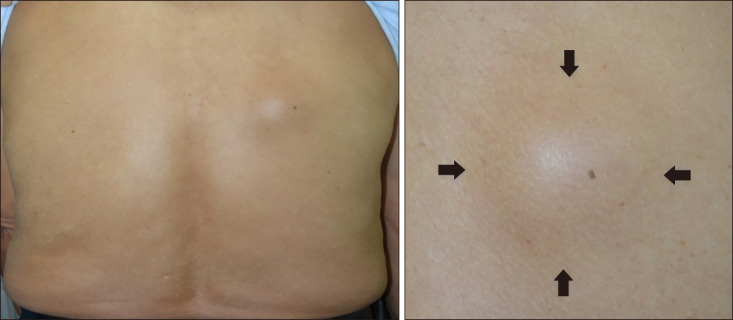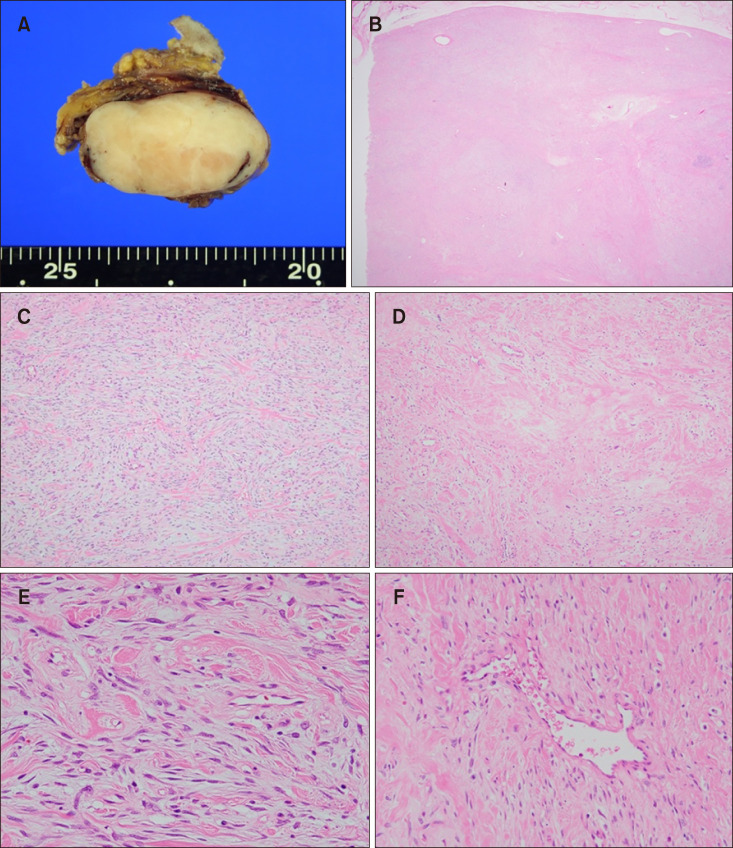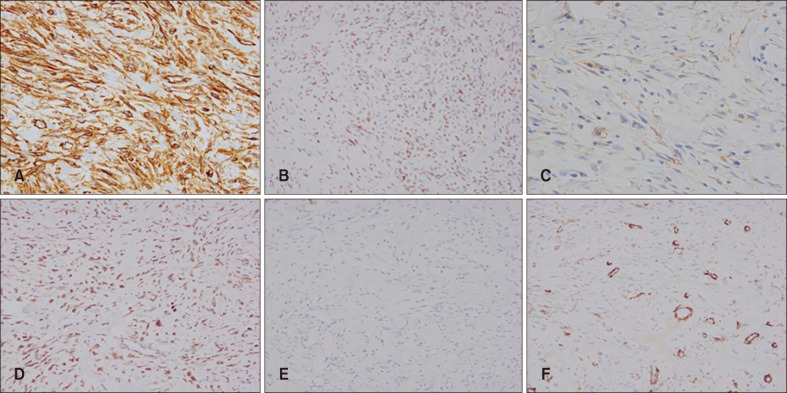Ann Dermatol.
2020 Apr;32(2):155-158. 10.5021/ad.2020.32.2.155.
Primary Cutaneous Solitary Fibrous Tumor on the Back
- Affiliations
-
- 1Department of Dermatology, Hanyang University Guri Hospital, Guri, Korea. tuentuen@hanyang.ac.kr
- KMID: 2471343
- DOI: http://doi.org/10.5021/ad.2020.32.2.155
Abstract
- Solitary fibrous tumors (SFT) are uncommon mesenchymal tumors. SFT have several synonyms including localized fibrous tumor, benign mesothelioma, localized fibrous mesothelioma, and submesothelial fibroma. SFT usually occur in the pleura or other serosal surfaces, but SFT can also develop in extrapleural areas including the nasal cavity, orbit, retroperitoneum, and pelvis. Cutaneous SFT is extremely rare, and more likely to occur in the head and neck region. Histologically, this tumor can mimic a variety of benign and malignant tumors such as dermatofibroma, dermatofibrosarcoma protuberans, spindle cell lipoma or other mesenchymal tumors. Most cases of SFT show non-aggressive clinical courses, with low recurrence rates. Herein, we describe a case of primary cutaneous SFT which presented with huge mass on the back.
Keyword
MeSH Terms
Figure
Reference
-
1. Erdag G, Qureshi HS, Patterson JW, Wick MR. Solitary fibrous tumors of the skin: a clinicopathologic study of 10 cases and review of the literature. J Cutan Pathol. 2007; 34:844–850. PMID: 17944724.
Article2. Kang TW, Kim HJ, Kim YC, Kim SC. A case of solitary fibrous tumor that developed on the scalp. Korean J Dermatol. 2009; 47:615–617.3. Moran CA, Suster S, Koss MN. The spectrum of histologic growth patterns in benign and malignant fibrous tumors of the pleura. Semin Diagn Pathol. 1992; 9:169–180. PMID: 1609159.4. Klemperer P, Rabin CB. Primary neoplasms of the pleura: a report of five cases. Arch Pathol. 1931; 11:385–412.
Article5. Okamura JM, Barr RJ, Battifora H. Solitary fibrous tumor of the skin. Am J Dermatopathol. 1997; 19:515–518. PMID: 9335244.
Article6. Soldano AC, Meehan SA. Cutaneous solitary fibrous tumor: a report of 2 cases and review of the literature. Am J Dermatopathol. 2008; 30:54–58. PMID: 18212546.
Article7. Terada T. Solitary fibrous tumor of the shoulder showing diverse distinct histologic patterns. Int J Dermatol. 2011; 50:208–211. PMID: 21244389.
Article8. Ali SZ, Hoon V, Hoda S, Heelan R, Zakowski MF. Solitary fibrous tumor. A cytologic-histologic study with clinical, radiologic, and immunohistochemical correlations. Cancer. 1997; 81:116–121. PMID: 9126139.




